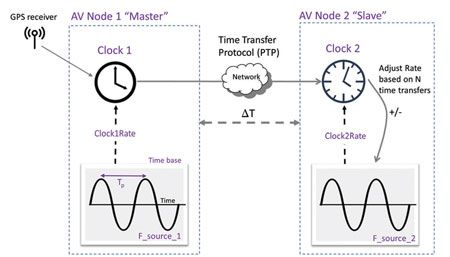I learned something new today; the first fax machine was built in 1860; and using the Nodal Clock for more accurate timestamping of real-time media IP signals and future event handling.
When transmitting an image from a sender to a receiver some notion of synchronization is required. In the 1860s Giovanni Caselli invented the Pantelegraph (a fax) that used a pendulum clock to regulate the transmitter’s scanning stylus and the receiver’s writing stylus.
In our day, “black-burst sync” and “tri-level sync” were used to align video signals in a facility. Now with Ethernet/IP taking the reins, synchronization may be achieved with common nodal clocks. The essence is for a “slave node” to lock its clock to a “master node” clock. Common node clocks can be used to create sync as will be shown. The SMPTE ST 2059 family of standards and the IEEE-1588 V2 Precision Time Protocol (PTP) standard are the basis for facility clocking and signal synchronization using IP networks.
The fundamental metrics of synchronization are time, frequency and phasing. From Fig. 1, each node has an individual clock with a time of day (ToD with date) that is governed by a frequency source or “time base.” By way of example, the time base may be 60 cycles per second (Tp = 1/60) or some other constant value. The signal is shown as a sine wave, but other periodic signals will do. Clock 1 is typically locked to a GPS time source in some manner.










Comments are closed.